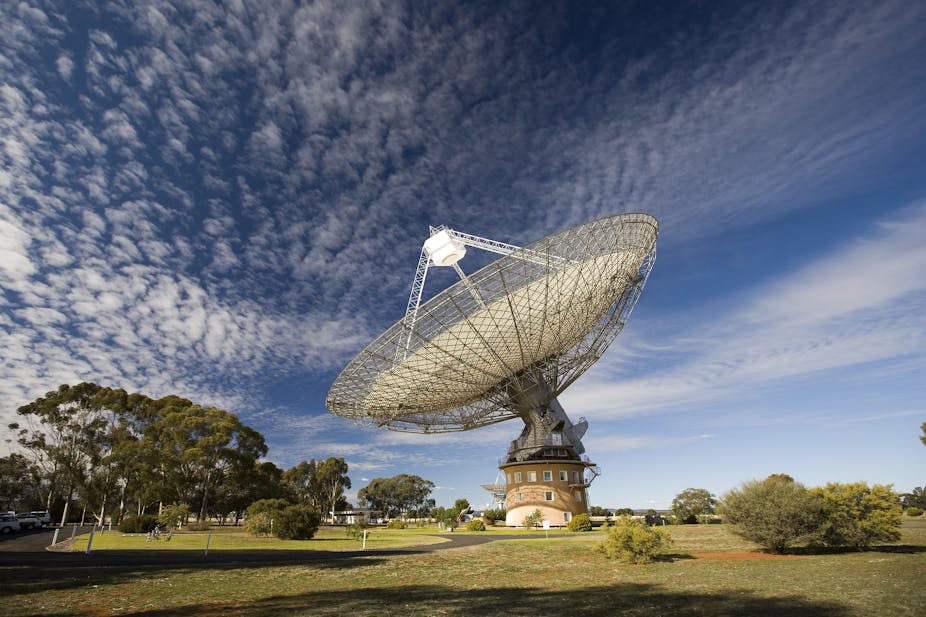Recently my colleagues and I announced the discovery of a remarkable planet orbiting a special kind of star known as a pulsar.
Based on the planet’s density, and the likely history of its system, we concluded that it was certain to be crystalline. In other words, we had discovered a planet made of diamond.
Following the publication of our finding in the journal Science, our research received amazing attention from the world’s media.
The diamond planet was featured in Time Magazine, the BBC and China Daily, to name but a few.
I was asked by many journalists about the significance of the discovery. If I were honest, I’d have to concede that, although worthy of publication in Science, in the field of astrophysics it isn’t that significant.
Sure, there are probably somewhere between six and a dozen quite important theoretical astrophysicists around the world who would have been thrilled at the news (after all, the diamond planet fills a gap in the binary pulsar family).
But in the overall scheme of things, it isn’t that important.
And yet the diamond planet has been hugely successful in igniting public curiosity about the universe in which we live.
In that sense, for myself and my co-authors, I suspect it will be among the greatest discoveries of our careers.
Our host institutions were thrilled with the publicity and most of us enjoyed our 15 minutes of fame. The attention we received was 100% positive, but how different that could have been.
How so? Well, we could have been climate scientists.
Imagine for a minute that, instead of discovering a diamond planet, we’d made a breakthrough in global temperature projections.
Let’s say we studied computer models of the influence of excessive greenhouse gases, verified them through observations, then had them peer-reviewed and published in Science.
Instead of sitting back and basking in the glory, I suspect we’d find a lot of commentators, many with no scientific qualifications, pouring scorn on our findings.
People on the fringe of science would be quoted as opponents of our work, arguing that it was nothing more than a theory yet to be conclusively proven.
There would be doubt cast on the interpretation of our data and conjecture about whether we were “buddies” with the journal referees.
If our opponents dug really deep they might even find that I’d once written a paper on a similar topic that had to be retracted.
Before long our credibility and findings would be under serious question.
But luckily we’re not climate scientists.
Our work is part of the astonishing growth in our knowledge of the universe, made possible by huge leaps forward in instrumentation and telescope technology.
Method
It may come as a big surprise to many, but there is actually no difference between how science works in astronomy and climate change – or any other scientific discipline for that matter.
We make observations, run simulations, test and propose hypotheses, and undergo peer review of our findings.
We get together (usually in nice locations around the world) and discuss and debate our own pet theories, become friends and form a worldwide community.
If you are a solid state physicist, an astronomer, or doing laser optics, the world is happy to celebrate your discoveries, use them in new products such as WiFi, and wonder about the growth in knowledge and technology.
Of course we all make mistakes. But eventually the prevailing wisdom of the community triumphs and the field advances.
It’s wonderful to be a part of that process.
But on occasion those from the fringe of the scientific community will push a position that is simply not credible against the weight of evidence.
This occurs within any discipline. But it seems it’s only in the field of climate science that such people are given airtime and column inches to espouse their views.
Those who want to ignore what’s happening to Earth feel they need to be able to quote “alternative studies”, regardless of the scientific merit of those studies.
In all fields of science, papers are challenged and statistics are debated. If there is any basis to these challenges they stand, but if not they fall by the wayside and the field continues to advance.
When big theories fall, it isn’t because of business or political pressures – it’s because of the scientific process.
Sadly, the same media commentators who celebrate diamond planets without question are all too quick to dismiss the latest peer-reviewed evidence that suggests man-made activities are responsible for changes in concentrations of CO2 in our atmosphere.
The scientific method is universal. If we selectively ignore it in certain disciplines, we do so at our peril.

